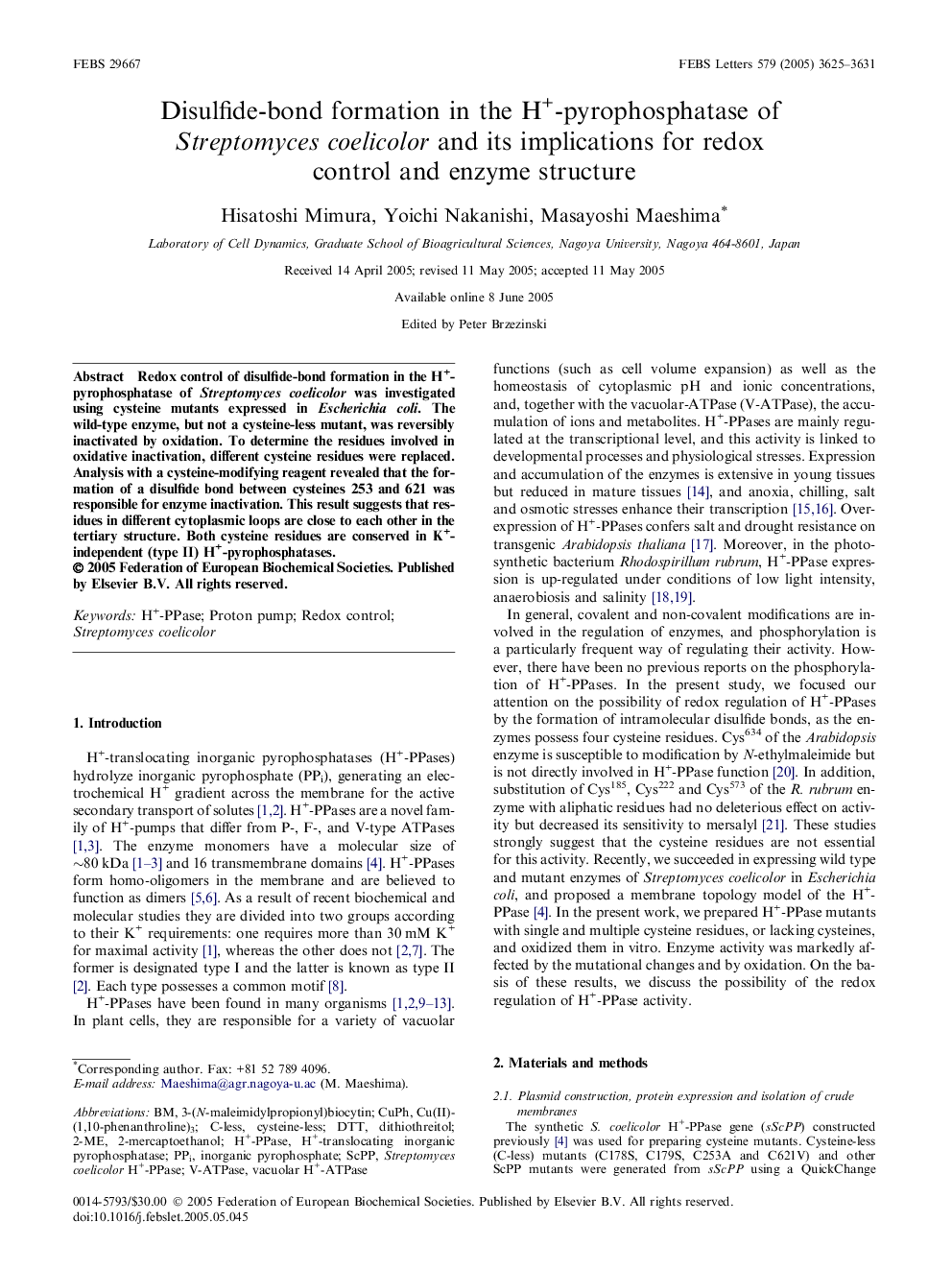| Article ID | Journal | Published Year | Pages | File Type |
|---|---|---|---|---|
| 2052427 | FEBS Letters | 2005 | 7 Pages |
Abstract
Redox control of disulfide-bond formation in the H+-pyrophosphatase of Streptomyces coelicolor was investigated using cysteine mutants expressed in Escherichia coli. The wild-type enzyme, but not a cysteine-less mutant, was reversibly inactivated by oxidation. To determine the residues involved in oxidative inactivation, different cysteine residues were replaced. Analysis with a cysteine-modifying reagent revealed that the formation of a disulfide bond between cysteines 253 and 621 was responsible for enzyme inactivation. This result suggests that residues in different cytoplasmic loops are close to each other in the tertiary structure. Both cysteine residues are conserved in K+-independent (type II) H+-pyrophosphatases.
Related Topics
Life Sciences
Agricultural and Biological Sciences
Plant Science
Authors
Hisatoshi Mimura, Yoichi Nakanishi, Masayoshi Maeshima,
